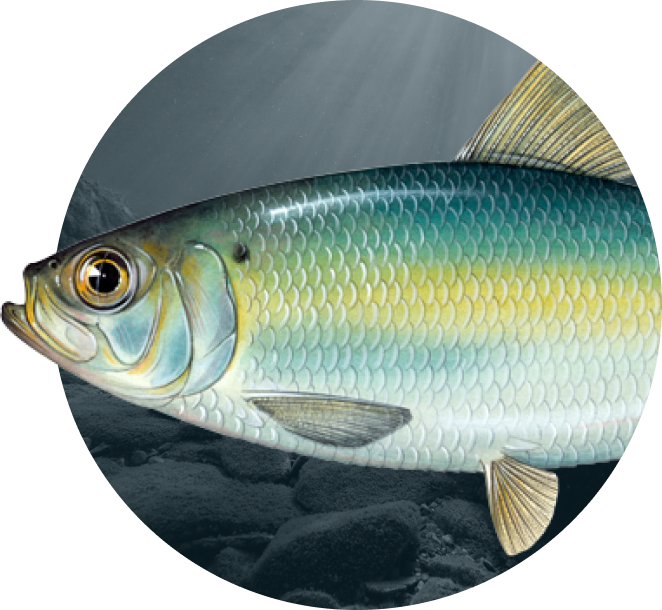Arlington, VA – The River Herring Benchmark Stock Assessment finds the coastwide populations of both alewife and blueback herring (collectively referred to as river herring) are depleted relative to historic levels, with the habitat model indicating that overall productivity of both species is lower than an unfished population before the occurrence of any habitat modifications (e.g., dams or human alterations to the environment). The depleted determination was used instead of overfished and overfishing because of the many factors that have contributed to the declining abundance of river herring, which include not just directed and incidental fishing, but also habitat loss, predation, and climate change.
In terms of recent trends, there is no clear signal for either species across the coast. Even within the genetic stock-regions, trends in abundance and mortality differed from river to river, with some rivers showing increasing trends and low mortality rates, and others showing flat or declining trends and total mortality rates above the reference point. Although very few significant trends overall were detected since the adoption of Amendment 2 in 2009, the majority of indices of abundance for both alewife and blueback herring are likely to be higher now than they were in 2009. However, half of the blueback populations and 65% of the alewife populations have a high probability of being above the total mortality reference point, indicating total mortality on adult fish was too high. Total mortality is the removal of fish from a population due to both fishing and natural causes. The northern New England region shows more positive trends and a higher probability of abundance in the most recent years being greater than in 2009. It is unclear why that is the case, especially as the more northern regions also have higher probabilities of being above the total mortality reference point. States in the northern New England region have conducted extensive habitat restoration and dam removal, but so have states further south, and they have not seen the same degree of positive trends in run counts and indices. In addition, states in the northern stock-region have also accounted for the majority of directed catch in recent years, while states in the Mid-New England, Southern New England, and Mid-Atlantic stock-regions have closed their fisheries. Genetic analysis indicates most of the ocean bycatch around Cape Cod and Long Island Sound was of alewife from the Southern New England stock-region and blueback herring from the Mid-Atlantic stock-region, two areas that have had more negative trends in recent years despite habitat restoration efforts and directed fishery closures.
The assessment includes two proof-of-concept approaches to develop biologically-based caps on bycatch in ocean fisheries. The data-limited methods produced estimates of bycatch caps that were lower than the current coastwide bycatch estimates and lower than the current caps in the Atlantic herring and Atlantic mackerel fishery. However, more work needs to be done on the data-limited bycatch cap approach, including consulting with the Mid-Atlantic and New England Fishery Management Councils on risk levels and how to implement species-specific caps in fisheries where the bycatch monitoring includes American and hickory shad as well as river herring. The assessment also recommended exploring species distribution modeling to identify hot spots of river herring bycatch that could be avoided with time-area closures as an alternative or complement to in-season monitoring of river herring bycatch.
No management action was taken given the continued coastwide harvest moratorium for states without an approved Sustainable Fishery Management Plan, as required by Amendment 2. Additionally, the New England Fishery Management Council is early in the process of drafting Amendment 10 to the Atlantic Herring Fishery Management Plan, which is proposing the development of measures to reduce river herring bycatch in the federal fishery.
A more detailed description of the stock assessment results, as well as the Benchmark Stock Assessment and Peer Review Report will be available on the Commission website, www.asmfc.org, on the Shad & River Herring webpage. For more information, please contact James Boyle, Fishery Management Plan Coordinator, at jboyle@asmfc.org.
